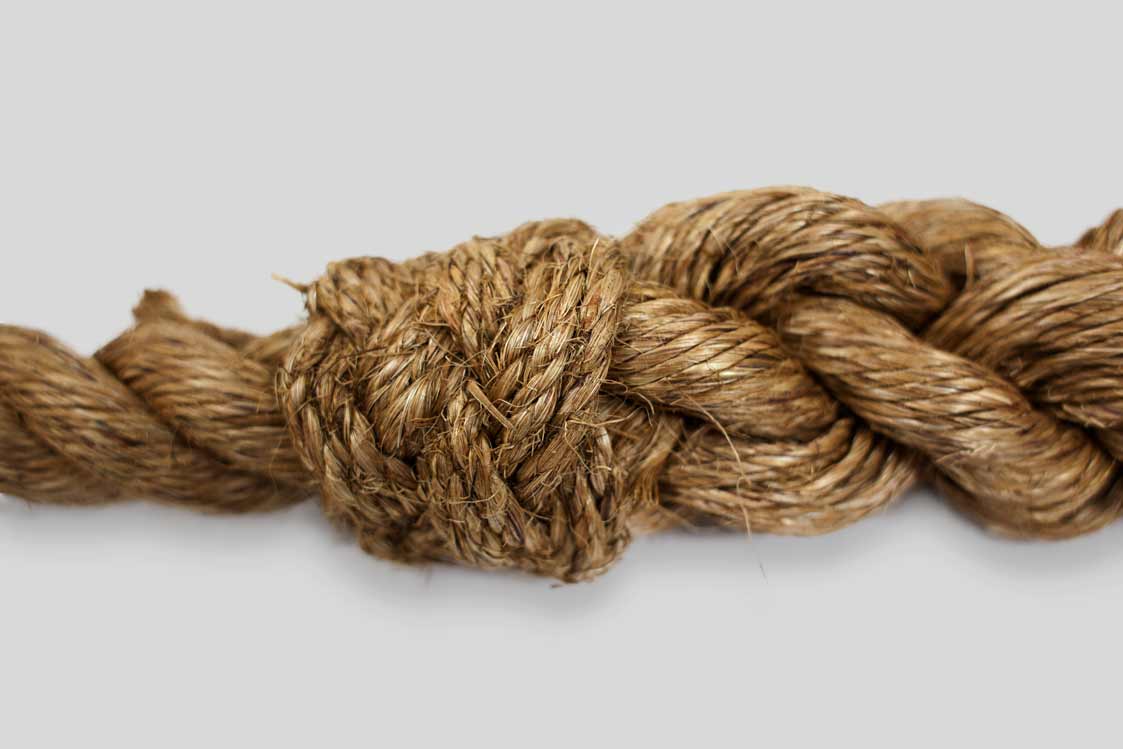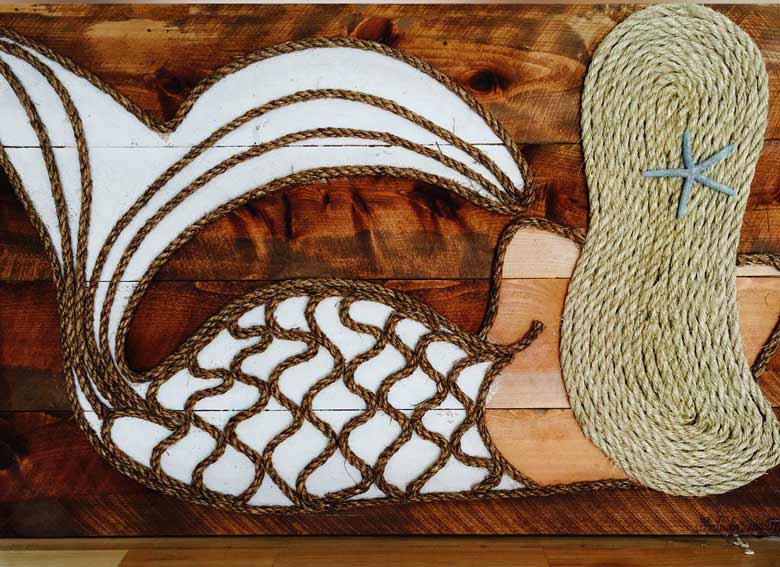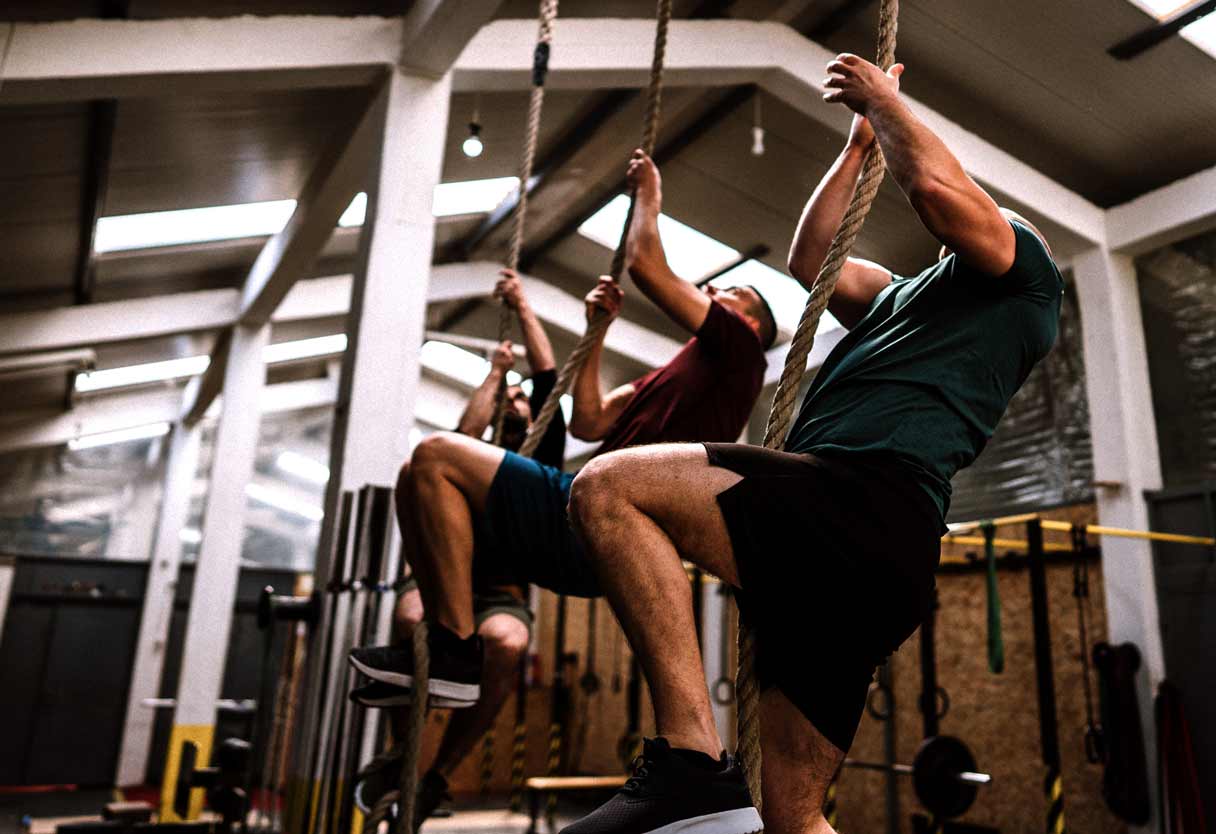
2" Manila
Weight: 1.0 lb

There's nothing better than Manila rope for an authentic appearance with a time-honored product. This reliable rope choice provides strength and durability as well as the classic look you want to use in your project. Manila rope is also a perfect option for any application where you wish to achieve a rustic feel.
Manila rope is great to use when you need something durable, flexible and economical. The natural brown fibers in this rope can be a little rough. This is sometimes exactly what you want, but it might make it undesirable for interior projects. Customers looking for a smoother rope might prefer our Pro Manila rope.
Wherever possible, use splices constructed to safe specifications. A proper splice on a rope can maintain 80% to 100% of the new rope average break strength. Trained personnel should construct all splices. If knots are used on a rope, be aware that they can reduce the rope's strength by up to 50%. If knots are required, be sure to select the proper knot for the job.
All rope has a rating referred to as a "tensile strength" or "average break strength." This number is the amount of weight that the rope should be able to hold in ideal conditions, specifically, a new rope, with no knots or splices, at room temperature. These break strength numbers are based on actual destructive break testing by the manufacturer or a certified third-party testing facility. Ropes are tested over many cycles and the average break strength is determined and specified for the product. We test our ropes personally, and all our splicers have their work tested on an ongoing basis using a certified test bed facility. This is to ensure that their splicing work is perfect, and that their splicing technique and skills are 100% within acceptable splicing guidelines set by the rope industry. Even the best splices and best rope can break if overloaded or used improperly. Make sure you thoroughly understand what you are doing with a rope. Get the right rope for the right job. If you have questions or are even remotely unsure or have doubts. STOP and get the information you need to BE SURE you are doing things safely.
Rope wear, knots, extreme hot or cold temperatures, chemicals, the manner in which the load is applied and other factors will result in a break strength lower than the stated average break strength.
A rope with a stated or advertised break strength, in pounds will not necessarily safely hold something that weighs that amount! Refer to the SAFE WORKING LOAD of a specific rope for more information.
IF IN DOUBT, ASK A PROFESSIONAL. We get calls all the time from people who have questions about what is the best rope to use for any given application. Don't be afraid to ask. Ultimately YOU are responsible for your safety using ANY rope, so don't chance it.
In a broad generalization, most working loads vary from 1/10 to 1/4 of the average break strength of the rope. Applications for rope used in life support or personal fall protection environments must use the 1/10 ratio.
Manila rope shrinks when it becomes wet. This effect can be advantageous under certain circumstances, but if it is not a wanted feature, this should be taken into account. If the rope will be used in an outdoor application, please consider ordering 10-15% additional product to accommodate shrinkage.
The production of Manila rope in The Philippines involves the addition of cordage oil to the fibers in preparation for being twisted into rope. This high viscosity mineral oil is very light. However, the lighter the oil, the more the oil smells, yet the easier it is for the oil to absorb into the rope fibers.
The cordage oil doesn’t go away, but the oil will dry into the rope and that’s when the smell dissipates.
Rope from The Philippines that is made in the spring, when it’s very humid, will have a stronger smell. The humidity prevents the oil from drying into the rope efficiently. Rope made in the drier months will not smell as much because the oil has dried into the fibers faster.
If the rope mill is using a batch of fibers that is dry, it means more cordage oil needs to be added prior to production. Dry fibers that are heavily oiled in a high humidity month can result in a very smelly rope when the oil smell mixes with the fiber smell.
Better fibers means less oil is needed to make them smooth and lay properly. We do offer this as a product called Ultra Manila, which we sell in 1” and 1 ½” diameters.





There's nothing better than Manila rope for an authentic appearance with a time-honored product. This reliable rope choice provides strength and...
View full detailsThere's nothing better than Manila rope for an authentic appearance with a time-honored product. This reliable rope choice provides strength and...
View full detailsThere's nothing better than Manila rope for an authentic appearance with a time-honored product. This reliable rope choice provides strength and du...
View full detailsThere's nothing better than Manila rope for an authentic appearance with a time-honored product. This reliable rope choice provides strength and du...
View full detailsThere's nothing better than Manila rope for an authentic appearance with a time-honored product. This reliable rope choice provides strength and du...
View full detailsThere's nothing better than Manila rope for an authentic appearance with a time-honored product. This reliable rope choice provides strength and du...
View full detailsThere's nothing better than Manila rope for an authentic appearance with a time-honored product. This reliable rope choice provides strength and du...
View full detailsThere's nothing better than Manila rope for an authentic appearance with a time-honored product. This reliable rope choice provides strength and du...
View full detailsThere's nothing better than Manila rope for an authentic appearance with a time-honored product. This reliable rope choice provides strength and du...
View full detailsThere's nothing better than Manila rope for an authentic appearance with a time-honored product. This reliable rope choice provides strength and du...
View full detailsThere's nothing better than Manila rope for an authentic appearance with a time-honored product. This reliable rope choice provides strength and du...
View full detailsThere's nothing better than Manila rope for an authentic appearance with a time-honored product. This reliable rope choice provides strength and du...
View full detailsThere's nothing better than Manila rope for an authentic appearance with a time-honored product. This reliable rope choice provides strength and du...
View full detailsThere's nothing better than Manila rope for an authentic appearance with a time-honored product. This reliable rope choice provides strength and du...
View full detailsThere's nothing better than Manila rope for an authentic appearance with a time-honored product. This reliable rope choice provides strength and du...
View full detailsThis is a 2-Ply jute twine perfect for garden, crafts, and general purpose use. Because of its softness and good tying qualities, jute is often use...
View full detailsWe just started stocking this unique product for customers who are seeking something a little different for interior decor use. This is an honest ...
View full detailsWe just started stocking this unique product for customers who are seeking something a little different for interior decor use. This is an honest ...
View full detailsKnot & Rope Supply offers the best ropes on the market, this includes our Natural Manila! A common rope used in a variety of applications, manila rope offers that rustic look and the gripability you need and want in an exercise rope.
Get your Natural Manila Rope from Knot & Rope Supply, you won't be sorry you did!
Natural Manila rope will change color when it is outdoors in the elements. Although this rope does excellent in warm, dry climates, it will get a grayish, weathered look over time. This gives the manila rope a rustic look.
You want to keep in mind that natural manila rope will shrink when it gets wet and will eventually rot from the inside out when it's used in areas where it will get wet.